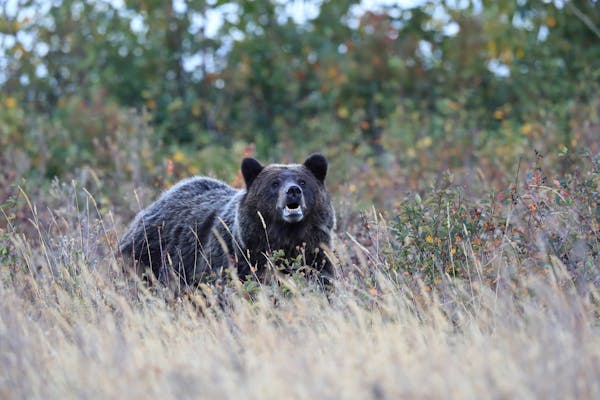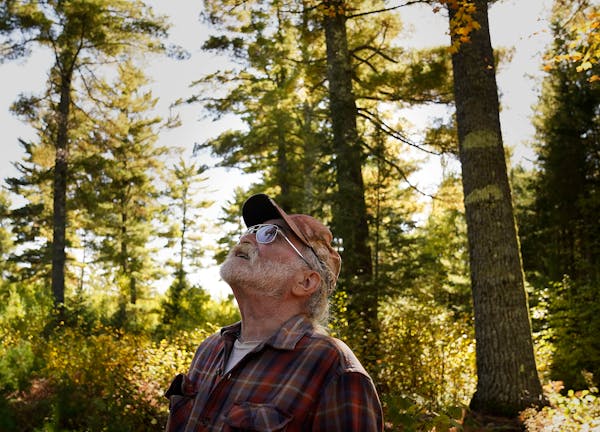The Minnesota Department of Natural Resources has pulled back from selling timber on federally funded wildlife lands as it continues to address environmental concerns pressed by the U.S. Fish & Wildlife Service (FWS) for the past several years.
The DNR's sudden pause is the latest development in an ongoing conflict over the federal agency's effort to make sure the DNR's timber sales are first for wildlife purposes — not to satisfy relentless timber quotas. Meeting the wildlife-first standard is a requirement for millions of dollars in ongoing federal grants to Minnesota from excise taxes and license fees collected from hunters and anglers.
The DNR confirmed late last week in an interview with the Star Tribune that at least one such grant, worth $14 million this year, hasn't been conferred by the FWS more than five weeks into the new fiscal year. The full slate of so-called Pittman-Robertson and Dingell-Johnson grants is annually worth $20 million to $30 million to the DNR.
Dave Olfelt, the DNR's fish and wildlife division director, and Tim Patronski of the FWS's Midwest Region said the two agencies are actively discussing the logging issue. The talks pertain to timber sales on federal-aid lands including state wildlife management areas (WMAs) and state aquatic management areas (AMAs), together comprising more than 1.4 million acres.
"I'm getting close to having information on the topic,'' Patronski said in an interview with the Star Tribune.
Olfelt said the two agencies have been in conversations this spring and summer regarding planned timber harvests on wildlife management areas. In late June, about one week before three WMA timber stands in the Warroad forestry district were scheduled to go up for auction, DNR pulled them back, he said.
The FWS didn't request the withdrawal, Olfelt said, but there was discord between the two agencies. "They wanted to be looking at stuff before we put it up for auction and we didn't have that same understanding … so we stopped,'' Olfelt said.
Moreover, in collaboration with DNR's forestry division, Olfelt's office has placed all other WMA timber sales on hold "until we have a clearer understanding,'' he said.
"We are not going to put any more up until we get the nitty gritty ironed out,'' Olfelt said.
In December, DNR Commissioner Sarah Strommen and then-FWS Regional Director Charlie Wooley announced a five-point management agreement as a "path forward'' to resolve conflict borne out of an expanded logging program launched by the DNR in 2018. The program, developed in response to a plea from the forest products industry, strives to annually put up for sale 870,000 cords of timber across all DNR-management lands, including WMAs and AMAs. The FWS supports logging on those federally aided parcels but only if the timber sales are carried out for the benefit of wildlife.
The five-point agreement, struck late last year, called for training of DNR staff and for field monitoring visits of logging sites, among other things. Now, Olfelt said, the two sides are in further discussions and the DNR paused timbers sales on WMAs "out of respect for the conversations we were having.''
Rank-and-file complaints
The overarching conflict came to light four years ago, when 28 DNR field employees wrote to Strommen saying the new logging quotas were hurting wildlife and that it was "scientifically dishonest'' for the agency to say otherwise. The employees, including wildlife managers and foresters alike, complained in their memo that wildlife habitat goals on federally aided hunting lands were being sacrificed to meet hard timber targets.
Some of those rank-and-file complaints were validated eight months later when two federal wildlife biologists monitored logging activity at three large WMAs. According to a central finding in their report, the DNR's Forestry Division appeared to be implementing timber harvests "primarily to meet commercial timber objectives.'' The report said the DNR's Fish and Wildlife Division seemed to have little oversight of the cuttings despite legal requirements for any type of forest management on the wildlife lands to primarily benefit wildlife.
The monitoring report said DNR "might lack compliance'' with seven laws and regulations, including the federal Pittman-Robertson Wildlife Restoration Act. Instead of enhancing wildlife habitat, some of the observed sites were logged to the detriment of critters and hunters, the report said.
Steve Thorne, a former DNR deputy commissioner who is part of a group of retirees working to hold DNR accountable to wildlife-first mandates on WMAs and AMAs, said oak savannas are among the natural resources getting "hammered'' by DNR's logging program.
DNR executives have consistently inverted the principle of putting wildlife habitat concerns above industry demands for more timber, Thorne said. At risk, he said, is the uninterrupted flow of Pittman-Robertson and Dingell-Johnson Act dollars that have been critical to DNR's budget for the past 70 years.
"I think they've been playing chicken with the Fish and Wildlife Service,'' Thorne said. "They could have avoided this mess so many times.''

Caitlin Clark revs up Pacers fans with pregame playoff appearance in IndyCar replica


